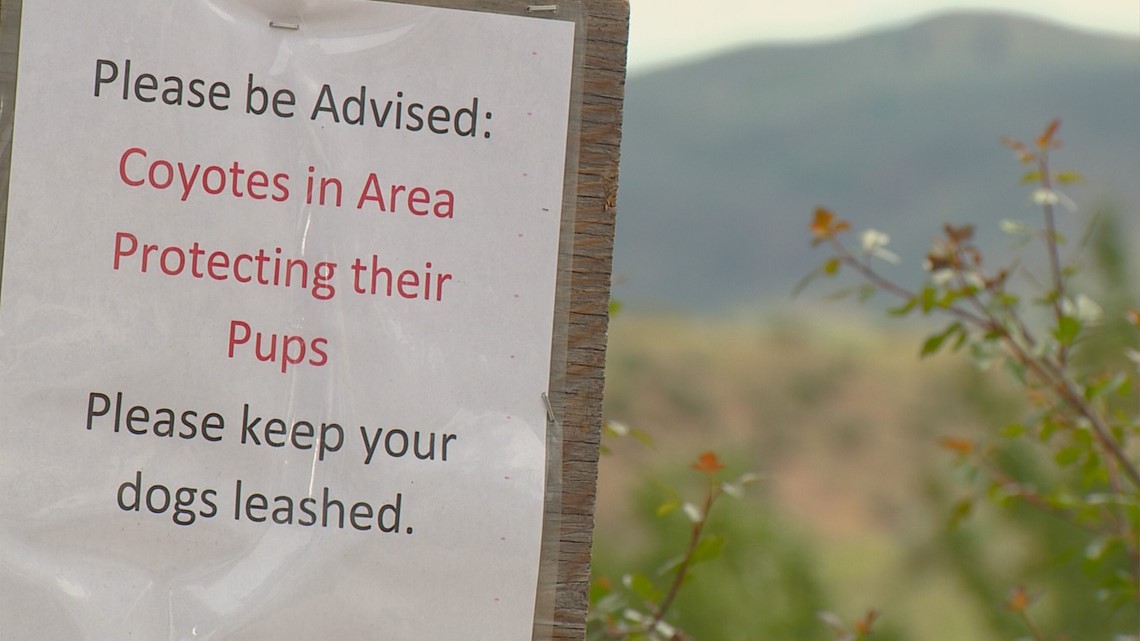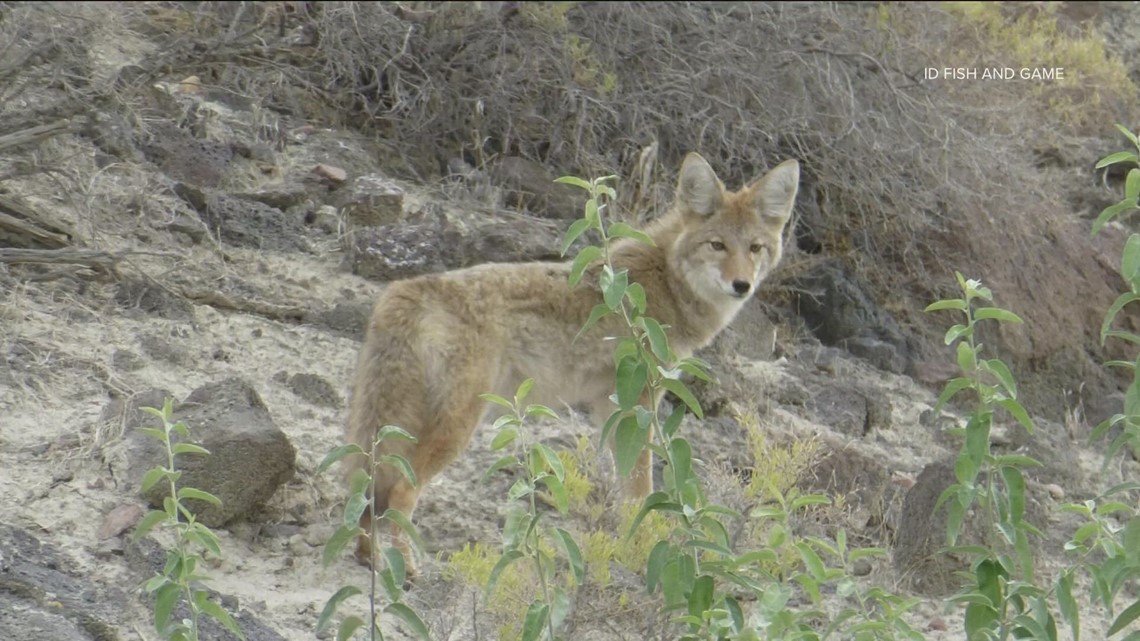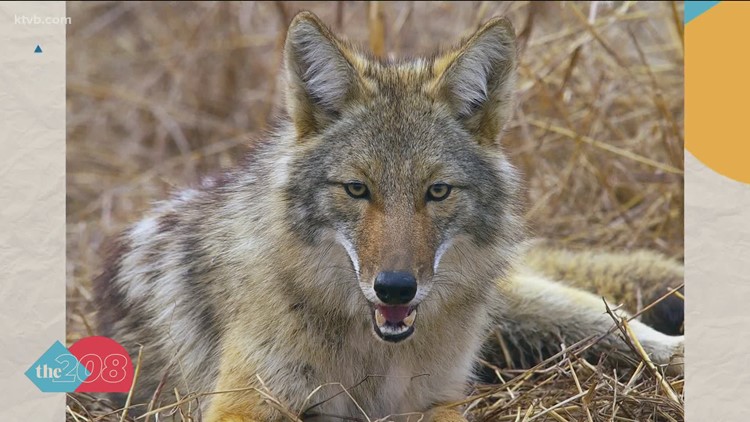BOISE, Idaho — A recent coyote attack on an off-leash dog in Southeast Boise has prompted Idaho Fish and Game (F&G) to warn residents in the Southwest Region of Idaho of increased coyote activity as the denning season approaches.
F&G said the possible non-fatal coyote attack on the dog occurred in an open space popular with dog walkers near the intersection of East Amity Road and South Surprise Way.
Fish and Game said they were unable to confirm whether the coyote was responsible for the attack.
However, a stark reminder that coyote conflicts increase near the peak of the coyote breeding season when they become more territorial toward other canines, including domestic dogs.
Residents are strongly encouraged to keep dogs on a leash when recreating to reduce potential conflicts with wildlife.


Fish and Game's Magic Valley Region office has also received reports of dog-aggressive coyotes, particularly in Twin Falls and Hagerman.
F&G warned residents in the Magic Valley region of increased activity of aggressive coyotes and foxes.
In a statement released on March 15, F&G said they have received an abnormally high volume of reports and calls regarding the animals in areas of the Magic Valley, as well as Twin Falls.
F&G officials noted two coyote incidents and one fox incident with off-leash dogs in the Magic Valley area.
The first incident occurred near Hagerman, when an aggressive coyote bit an off-leash dog.
The second occurred along the Auger Falls trail system in the Snake River Canyon - where a woman was hiking with her unleashed dogs, when they were approached by aggressive coyotes.
A third incident was reported of a fox that approached a man walking through a large vacant lot near Fred Meyer in Twin Falls. According to F&G, the fox may be responsible for recent reports of domestic cats having disappeared from the neighborhood.
The notable incidents all occurred near the peak of the coyote and fox breeding season, when the animals are inclined to be more territorial.


Although encounters between coyotes and domestic dogs can happen at any time of year, the risk increases during the mating season (late February to early March) - and again during denning season (spring and early summer), when coyotes are inclined to protect their young around their den sites.
Coyotes – particularly males – become aggressive during this time and may view dogs as either a prey source or as competition.
Coyotes are typically active at night. However, daytime activity does sometimes occur.
Regional Wildlife Manager Mike McDonald explains that coyotes and foxes are highly adaptable animals. "Denning can occur even in city parks or along urban river corridors, which have good hiding habitat and abundant prey species."
F&G explained that coyotes are naturally fearful of humans but may become more comfortable if given easy access to human food, garbage, pet food, small domestic pets and feral cats.
Tips for Homeowners:
- Remove or secure coyote attractants — such as pet food, trash or dog feces.
- Enclose backyard poultry, livestock, or other small animals that live outside with secure fencing and a roof.
- Don't leave your dog outside unsupervised, particularly in areas where coyote conflicts have been known to occur.
- If possible, ensure your property boundaries are secure by keeping fences in good repair and letting your dogs out for bathroom breaks only in fenced areas, especially if at night.
- If property is not fenced, turn on outside lights and make noise before letting your dog outside, and consider taking your dog out on a leash for nighttime bathroom breaks.
- Clear away brushy areas around your property that coyotes may see as safe denning or hiding spots.
Tips for Recreationists:
- Keep dogs on-leash when using trails.
- Consider bringing a loud noisemaker with you – a whistle, bell or horn – which can be helpful in scaring off a coyote.
- When hiking, make noise to announce your presence.
- Carry bear spray and know how to use it. It's not just for bears and can also be used as a highly effective tool against other wildlife if an unsafe encounter occurs.
- Be present in the moment, and aware of surroundings and pets. Don't use earbuds or headphones while hiking.
- If you know that an area has recently experienced dog-coyote encounters, consider using a different trail system or an entirely different recreation area in the Magic Valley.
For more information, contact Idaho Fish and Game Office at (208) 334-3700.
Watch more Local News:
See the latest news from around the Treasure Valley and the Gem State in our YouTube playlist:



